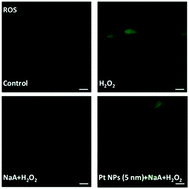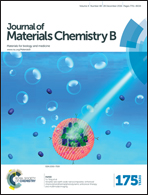Platinum nanoparticles inhibit antioxidant effects of vitamin C via ascorbate oxidase-mimetic activity†‡
Abstract
The development and application of nanomaterials as consumer products including food, drugs, and cosmetics are rapidly expanding. However, interactions between these novel materials and other chemical components of consumer products have not been thoroughly studied. Here, by using electron spin resonance techniques, we compared the effects of Au, Ag, and Pt nanoparticles (NPs) on the antioxidant activity of vitamin C (sodium L-ascorbate, NaA). Chemical studies showed that Pt NPs exhibit ascorbate oxidase-mimetic activity, thereby oxidizing NaA but Au and Ag NPs do not. This ascorbate oxidase-mimetic activity of Pt NPs results in a dramatic loss of antioxidant activity of NaA for scavenging hydroxyl radicals and superoxide radicals. A further study suggested that the ascorbate oxidase-mimetic activity of Pt NPs is critically dependent on the particle size. Finally, in vitro cell studies demonstrated that Pt NPs with ascorbate oxidase-mimetic activity inhibit the cytoprotective effect of NaA on cells challenged by oxidative stress. Our findings provide a better understanding of enzyme-mimicking NP interactions with naturally-occurring antioxidants and should guide future applications.


 Please wait while we load your content...
Please wait while we load your content...